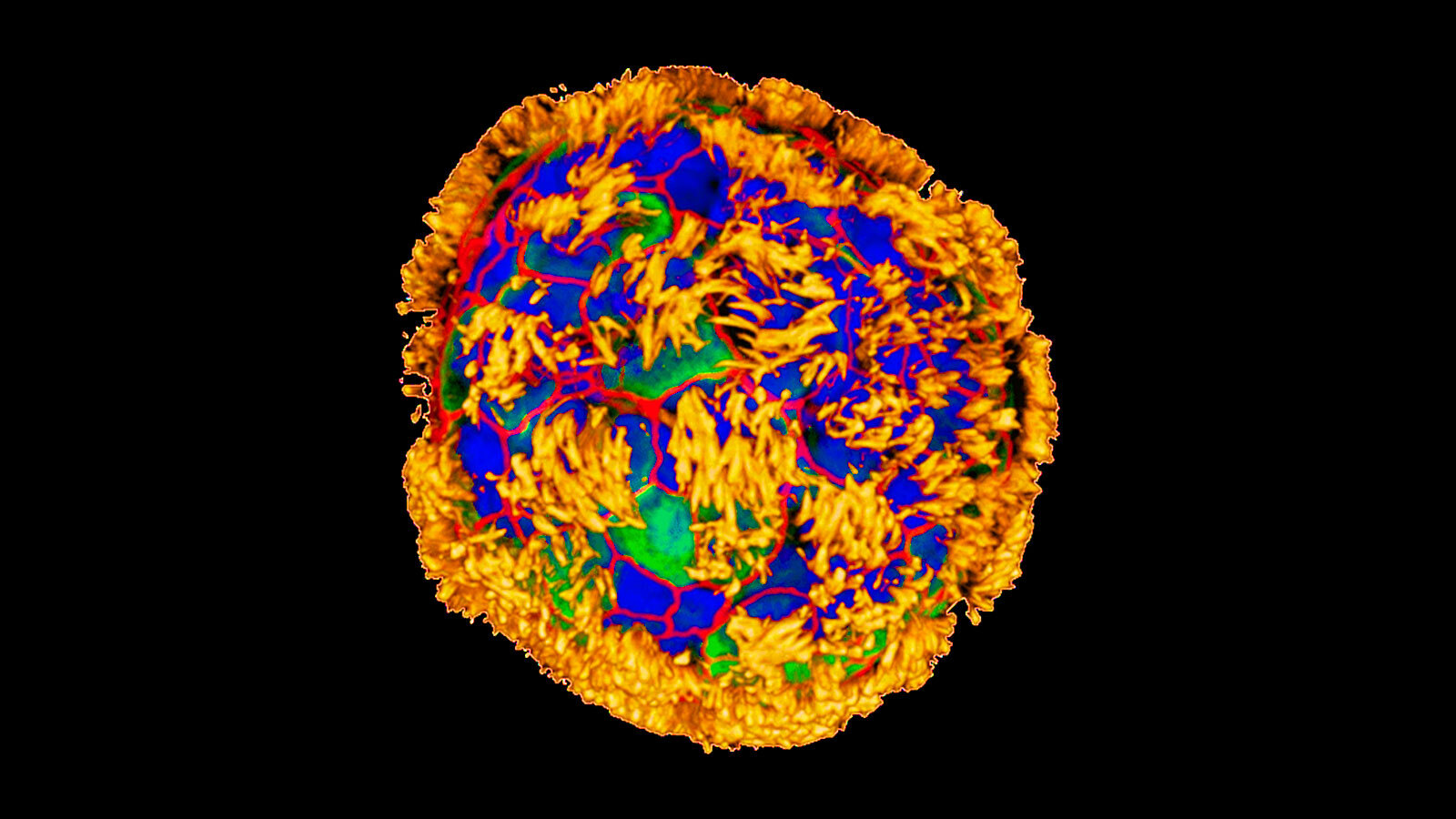In Big Pharma, too much ownership often blocks the development of new drugs, says Michael Heller.
Michael Heller: Let me give you a life or death example that’s happening right now. Some years ago I published an article in Science Magazine outlining the basic idea, the idea that too many owners [commit] to too little prosperity, and as part of that discussion around that article, I was contacted by a number of drug company executives and one of them told me, he said, “I have, I’m pretty confident that I have a drug that will substantially advance treatment of Alzheimer’s which could affect millions of lives,” and when that drug came to market it could earn his company billions of dollars, but he had shelved the drug. He said, “I’m not bringing this drug to market.” And I asked him why and he explained was that to develop the drug, to bring it to market, he was going to need to acquire licenses to dozens and dozens of patents. Now, imagine this guy walking into an auditorium and imagine each of those patents that’s relevant to his drug owned by a separate person usually by some small biotech company and they’re each sitting there in their little chair with their patent on their lap and everyone of those owners believes that their patent like their child is only the most special and important patent in the world. For the drug developer, to bring his drug to market, he needed to negotiate, to successfully negotiate with every single person in that room. Now, it’s hard enough getting group of friends to decide where to go for dinner to a restaurant, but it’s really impossible when you have dozens or hundreds of separate patent donors. Each one of them believes that their patent is the most important to get everyone of them to come together and agree to let this drug go forward, and the drug developer discovered he simply wasn’t able to do it. The negotiations were too hard. Each of the separate patent donors demanded such a high price that in sum they demanded more than the potential profits from that drug. So what he did is he shelves that Alzheimer’s cure. He gave up the billions of dollars potentially that was on the table, because he simply couldn’t find a way to… there’s lots of impediments to drug research. Lots of drugs don’t work or they have side effects. But one of the problems on drug development that hasn’t really been focused on that I discovered and then talking about in this book is the problem, is a separate problem, not of side effects but of ownership effects, of ownership gridlock of too many owners. And what happens there is, what he did, what this drug developer did is he went to do a spin-off of existing drugs that already had intellectual property for it, so he can make money from spin-offs but he gave up the real, new, blockbuster drug that could have saved a lot of lives. Now, that is not an isolated example. In the last 30 years, we have seen drug research investment, drug R&D money going up and up and up and up. More, more money is going to the drug R&D. We have a whole new biotech industry based on drug R&D. But the number of new drugs that’s treat disease has gone down and down and down, and that’s really shocking. What you have is an increase in spending and a decrease in cures. You have a drug discovery gap and that gap isn’t an accident. That gap is caused by gridlock. We have lots more inventions of the pieces of the input that you need to make drugs, which is great, but lot fewer of the drugs that actually save lives coming out of the other end of the drug R&D pipeline and this isn’t just an accident. This isn’t just [happenstance]. This isn’t just automatic that it works this way. This is the outcome of a set of policy choices that we made, the county made, the United States made about less than 30 years ago. We decided that we wanted to get more private money into basic science and the way that you do that is you give more property rights if you discover stuff, so we changed the patent law and we changed how we encourage universities to deal with their scientists. Now, scientists are told in universities patent what you discover, commercialize it, and that’s great. So, the upside of those changes in the patent law and in how we treat university scientists over the last 30 years is that we created the biotech revolution and enormous amount of discoveries have come with that. There are almost 40,000 DNA drug patents in the last 30 years. So, the upside of those changes, of the choices that we made was to create a biotech revolution, but the downside, the part that no one consider before we made those changes that was invisible, that was hard to see, the gridlock side of the story is that now with, now, say, for example, you want to make a diagnostic, some sort of medical tool that’s going to diagnose something on your gene, and to make that tool, we need dozens or hundreds of little gene fragments. And if each of those little gene fragments is owned separately, you know, we can’t make the gene [chip]. It’s just too hard to negotiate. That’s another area, medical diagnostics is another area where we have a lot more information because of this biotech revolution, but a lot fewer of the tools that actually save human life. More ownership, less prosperity, that’s gridlock.
Question: Where else does this problem of gridlock exist?
Michael Heller: All right. So, what we have now is a problem with drugs that should exist and could exist not coming to market, but it’s not just drugs that are suffering from the problem of gridlock. We are seeing gridlock all across the entire wealth creation frontier. This is a basic problem for the structure of innovation in America. Let me give you a very different kind of example from drugs, but one that’s maybe even more costly economically even if maybe not as costly in terms of human life, and let me [frame] that as a question. The question is this – what’s the most underused natural resource in America? It turns out it’s the airwaves. Over 90% of the airwaves in America is dead air, is completely wasted. And what that means is that it’s very hard to find the spectrum to create all of the next generation of technology that exist in many parts of the world and can’t be brought in the United States. So, United States just generation ago was the global leader in all the information economy, in wireless, in broadband, in the kind of technology that makes this conversation between us possible, and make the conversation between us and your listeners possible. That is really hard to imagine in this country in part because we have done such a bad job in organizing ownership of spectrum. We have, the way that we own spectrum in this country, nothing is visible, just like drugs are invisible. But, what we first set up spectrum ownership in the 1920s and we haven’t really updated it very much since then, so what you have is thousands and thousands of owners of small, tiny bits of spectrum dispersed across the country and dispersed across the radio dial. So, if you want to have, if you want to create technology that requires… or that lets you transmit some national wireless signal, that’s incredibly hard to put together. You have to assemble all this little bits from all over the country which is probably expensive. So, for example, if you have a Nextel phone with a Push to Talk, the way that Nextel is able to assemble its network was by buying up a bunch of taxi dispatch and pizza delivery licenses. So, we have a system that creates pizza delivery licenses but that makes it really hard to have national wireless. So, when you sort of compare those values, what we have is a system that creates, that allows for a lot of fragmented, low value uses that makes it really hard to create the next generation of, you know, for example, 3G wireless broadband, really high-speed wireless broadband that lets you watch television in real time on your cellphone. You can do that in Japan, you can’t do it here, and the reason you can’t do it is too many fragment owners and gridlock.
Question: What about copyright law?
Michael Heller: Let me ask you this, why does a hip hopper like Chuck D from Public Enemy today usually rap over a single sample? The early Public Enemy sound is one that has this collage of sound. They rap over a wall of clips that he assembled from dozens or usually even hundreds of different sources. That’s totally gone. That collage sound in rap music is totally gone. Now, some people may think, oh, it’s just a change in taste, but it’s not. The reason we don’t have the collage sound in rap anymore is also the problem of gridlock. Record companies started expansively interpreting what it meant to own a copyright, shrinking the zone of what’s understood to be fair use, the use that we can make without payment of other people’s copyrighted works, and the result has been that rappers, and in all kinds of other new media, artists and creators are scared off from creating the kinds of mash-ups and remixes that have led to so much of the real creativity of the cutting edge of art in the last generation. It’s really just being shut down. One more example, green power talk a lot about drilling in the Arctic or drilling in off shore, but the United States has the ability to create most of the electricity that it needs from renewable sources right here at home already. So, for example, wind power in this country, it’s just 1% of our total energy supply. It could easily be 20%. Most of the really powerful wind in this country is in the Midwestern plains from Texas to the Dakotas. We cannot get wind power from the plains to the places that people really want it, the coastal cities where people are willing to actually pay more for renewable power. Why? Because to get power from the plains in the cities, you have to transmit it and the transmission system of this country is broken up among roughly 500 different companies, each of which protects its own little piece and none of whom are willing to work together across state lines. Also, the problem of each state having its own regulatory system, being unwilling to cooperate with the next state over. So, we have the capacity to have clean, renewable wind power that would provide a significant percentage of the energy that this country needs, but we can’t get it from the places where it’s windy to the places that people want it. The point that these puzzles are nothing fancy, there’s nothing fancy going on here. The problem of gridlock is something that’s all around you once you know where to look. All the problems that I’ve given are really the same problem. Private ownership usually creates wealth, but too much ownership has the opposite effect. It creates gridlock.





